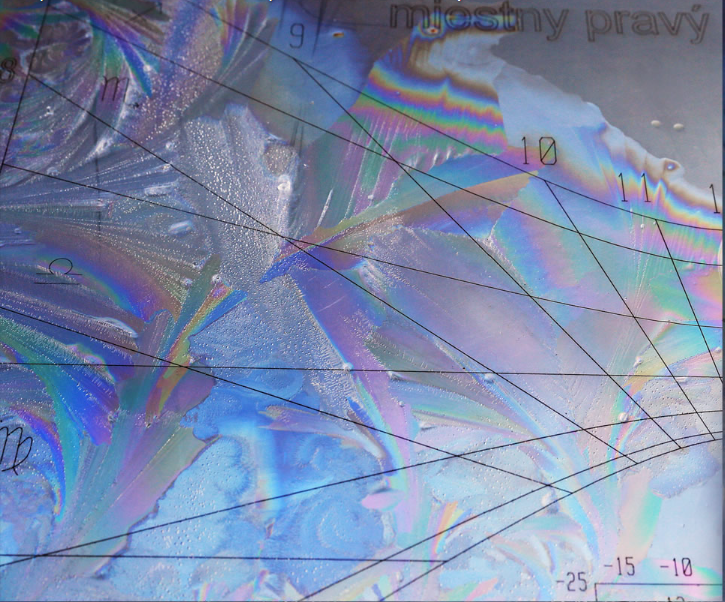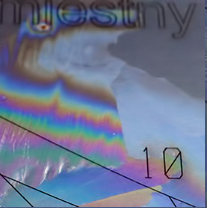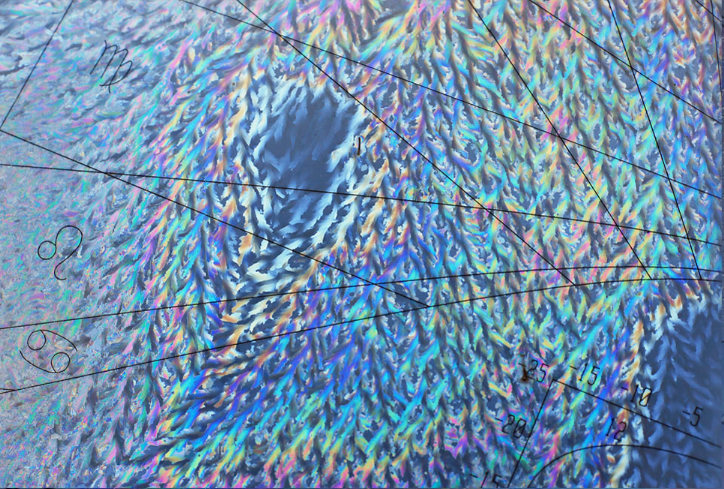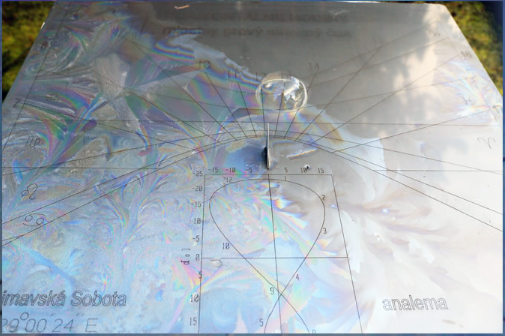Sundial Frost Birefringence, Slovakia - OPOD
Sundial Frost Birefringence: A Mesmerizing Atmospheric Phenomenon in Slovakia
Have you ever come across a sundial covered in morning frost, revealing a stunning display of colors? This captivating optical phenomenon, known as sundial frost birefringence, can be observed in various locations, including the Observatory Rimavská Sobota in Slovakia. In this article, we will delve into the intricacies of this mesmerizing natural occurrence, exploring the science behind it and uncovering the factors that contribute to its enchanting visual effects.
When frost forms on a sundial face, two optical phenomena come into play: thin film interference and birefringence. Thin film interference occurs when light passes through thin layers of ice or water trapped within the frost, resulting in faint colors. On the other hand, birefringence is a phenomenon that arises from the asymmetrical atomic structure of ice, causing light to refract differently based on its polarization. When viewed under polarized light, the birefringence of ice can produce vibrant colors. To capture the essence of this phenomenon, photographer Daniela Rapavá utilized a polarizing filter to reveal the stunning display of colors on the frost-covered sundial.
Dieter Zawischa, an expert in the field of color origins, analyzed the images captured by Rapavá. Upon closer examination, Zawischa observed a horizontal polished metal plate covered by a thin layer of ice. The scene was in shadow, predominantly illuminated by the polarized blue sky. In a cropped detail of the image, Zawischa noticed variations in the size of ice crystals, which correlated with differences in temperature and humidity. Lower temperatures and higher humidity resulted in smaller ice crystals.
Intriguingly, Zawischa noted that the absence of ice in the upper right corner indicated a gradient of ice thickness on the sundial face. As one moves from the rim towards the center, the thickness of the ice layer gradually increases. However, Zawischa observed a peculiar phenomenon in the middle of the cropped image: while the thickness of the ice did not noticeably change, the orientation of the crystal axes did. This observation led Zawischa to conclude that the vibrant colors observed were not solely due to thin film interference but were primarily a result of the birefringence of the ice.
The presence of shading on the sundial face further enhances the visual impact of sundial frost birefringence. As the morning sun casts its rays, the shaded areas create a contrasting backdrop against which the vibrant colors of the birefringent ice crystals truly stand out. This interplay between light and shadow adds depth and dimension to the spectacle, captivating observers with its ethereal beauty.
It is important to note that sundial frost birefringence is a delicate and transient phenomenon. It requires specific conditions, including low temperatures, high humidity, and the right alignment of polarized light. These elements must align perfectly for the intricate colors to manifest on the frost-covered sundial face. As such, witnessing this captivating display is a rare treat, reserved for those fortunate enough to be in the right place at the right time.
In conclusion, sundial frost birefringence is a captivating atmospheric optics phenomenon that reveals a mesmerizing array of colors on frost-covered sundials. The interplay between thin film interference and birefringence in ice crystals creates a visual spectacle that is both scientifically intriguing and aesthetically enchanting. Through the lens of talented photographers like Daniela Rapavá, we are able to appreciate and marvel at the delicate beauty of this transient phenomenon. So, keep your eyes peeled during frosty mornings, for you may just stumble upon a sundial adorned with nature's own kaleidoscope of colors.

Horologiis frigore, tempus itineribus?
Morning frost on a sundial face pictured by Daniela Rapav� at Observatory Rimavsk� Sobota, Slovakia.
All images ©Daniela Rapav�, shown with permission
Birefringence or thin film interference?
Thin film interference across ice plates or trapped water layers gives weak colours.
Birefringence is another effect. The atomic structure of ice has asymmetry and light is thus refracted differently depending on its polarization � birefringence. The birefringence refraction is wavelength sensitive and ice seen under polarised light can show colours. Daniela Rapava used a polarizing filter.
I asked Dieter Zawischa (See his Origins of Colour website) what he thought..
" I see a horizontal polished metal plate covered by a thin layer of ice. The scene is in shadow .see below., so it is essentially illuminated by the .polarized. blue sky.
Now look at this cropped detail:


Ice crystals in the lower images are smaller. The temperature was -4 Celsius compared to -1 at top. Temperature history and humidity also influences frost crystal size.
In the upper right corner, there is no ice. At the rim, the ice is very thin, its thickness increases as one proceeds downwards.
Most probably, there is no noticeable change in thickness at the border between the two crystallites in the middle of the cropped image, but clearly the orientation of the crystal axes changes. If the colour bands were due to thin film interference, the colours should be the same in both single crystals.
I think that the ice is much too thick to show thin film interference and that all the colours are due to the birefringence of the ice."

The dial face is mostly shaded from the morning sun.
Note: this article has been automatically converted from the old site and may not appear as intended. You can find the original article here.
Reference Atmospheric Optics
If you use any of the definitions, information, or data presented on Atmospheric Optics, please copy the link or reference below to properly credit us as the reference source. Thank you!
-
<a href="https://atoptics.co.uk/blog/sundial-frost-birefringence-slovakia-opod/">Sundial Frost Birefringence, Slovakia - OPOD</a>
-
"Sundial Frost Birefringence, Slovakia - OPOD". Atmospheric Optics. Accessed on November 26, 2024. https://atoptics.co.uk/blog/sundial-frost-birefringence-slovakia-opod/.
-
"Sundial Frost Birefringence, Slovakia - OPOD". Atmospheric Optics, https://atoptics.co.uk/blog/sundial-frost-birefringence-slovakia-opod/. Accessed 26 November, 2024
-
Sundial Frost Birefringence, Slovakia - OPOD. Atmospheric Optics. Retrieved from https://atoptics.co.uk/blog/sundial-frost-birefringence-slovakia-opod/.